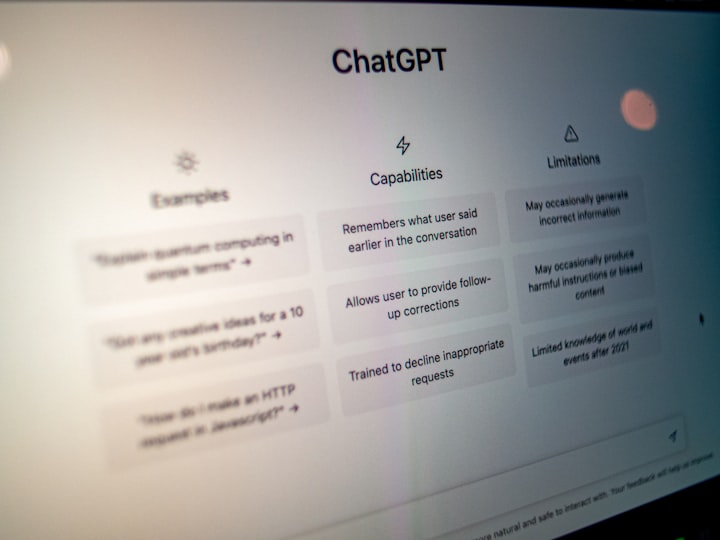ChatGPT: The Future of Language Models
Language has always been the cornerstone of human interaction, and the way we communicate has undergone several transformations over time. From the ancient era of hieroglyphics and pictograms to the modern era of text messages and social media, the evolution of language has been a constant endeavor. In recent years, the introduction of Artificial Intelligence has opened up new avenues for language processing and communication. ChatGPT, a large language model developed by OpenAI, is a perfect example of this.

What is ChatGPT?
ChatGPT is an AI-based chatbot that can engage in natural conversations with humans. It uses a large neural network that has been trained on a massive dataset of text to understand the nuances of language and generate human-like responses. The model has been fine-tuned to perform a wide range of tasks such as language translation, question answering, summarization, and more.
How does it work?
ChatGPT uses a technique called Generative Pre-training Transformer (GPT), which is a type of deep learning architecture. It takes in a sequence of text as input and generates a sequence of text as output. The model is pre-trained on a massive dataset of text, such as Wikipedia, books, and web pages, to understand the context and semantics of language. This pre-training allows the model to generalize to a wide range of tasks.
What makes ChatGPT unique?
ChatGPT is a unique language model for several reasons. Firstly, it is based on the latest advancements in deep learning and natural language processing. Secondly, it has been trained on a massive dataset of text, which allows it to understand the nuances of language and generate human-like responses. Thirdly, it can perform a wide range of tasks, making it versatile and adaptable.
Applications of ChatGPT
ChatGPT has several applications across various industries. Here are a few examples:
Customer Service
ChatGPT can be used as a customer service chatbot to handle customer queries and complaints. The model can understand the context of the conversation and provide relevant responses, which can improve customer satisfaction and reduce response times.
Healthcare
ChatGPT can also be used in the healthcare industry to answer patient queries, provide medical advice, and triage patients based on their symptoms. This can improve access to healthcare and reduce the workload on healthcare professionals.
Education
ChatGPT can be used in education to provide personalized learning experiences to students. The model can understand the student's learning style and provide customized content and feedback. This can improve student engagement and performance.
Content Creation
ChatGPT can also be used in content creation to generate high-quality content. The model can understand the context and style of writing and generate human-like content that is SEO-optimized and engaging.
Advantages of ChatGPT
ChatGPT offers several advantages over traditional chatbots and language models. Here are a few examples:
Natural Conversations
ChatGPT can engage in natural conversations with humans, making it easier to communicate and understand each other. The model can understand the context and tone of the conversation, making the interaction more human-like.
Scalability
ChatGPT can handle a large volume of conversations simultaneously, making it scalable and efficient. This can improve response times and reduce the workload on human operators.
Versatility
ChatGPT can perform a wide range of tasks, making it versatile and adaptable. The model can be trained on new datasets to perform new tasks, making it a valuable asset for various industries.
Challenges of ChatGPT
While ChatGPT offers several advantages, it also poses some challenges. Here are a few examples:Bias
ChatGPT can be biased based on the dataset it was trained on. This bias can lead to inaccurate or inappropriate responses, particularly in sensitive areas such as gender, race, and politics.
Ethical concerns
ChatGPT raises several ethical concerns related to privacy, data security, and AI ethics. For instance, it can be used to spread misinformation, manipulate people's opinions, and infringe on people's privacy.
Trust
ChatGPT requires a high level of trust from users for it to be effective. If users do not trust the chatbot, they are less likely to engage with it and may opt for traditional communication methods.
Conclusion
ChatGPT is a revolutionary language model that has the potential to transform the way we communicate and interact with AI. Its ability to engage in natural conversations, perform a wide range of tasks, and adapt to new datasets makes it a valuable asset for various industries. However, its biases, ethical concerns, and trust issues must be addressed to ensure that it is used in a responsible and ethical manner.
About the Creator
R Raja
Happy Life Happy Wealthness Enjoy....
More Bio Click here https://bit.ly/3G10YX0






Comments
There are no comments for this story
Be the first to respond and start the conversation.